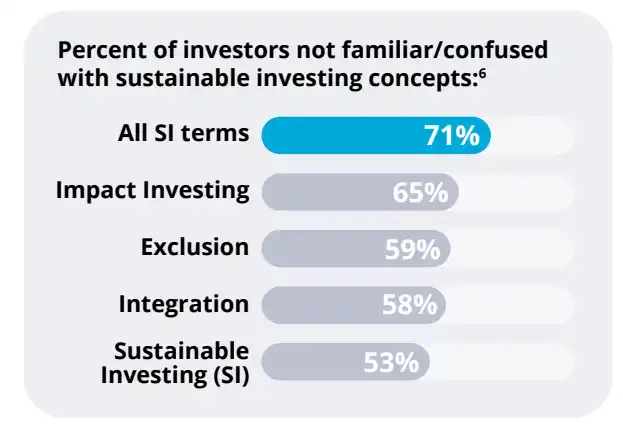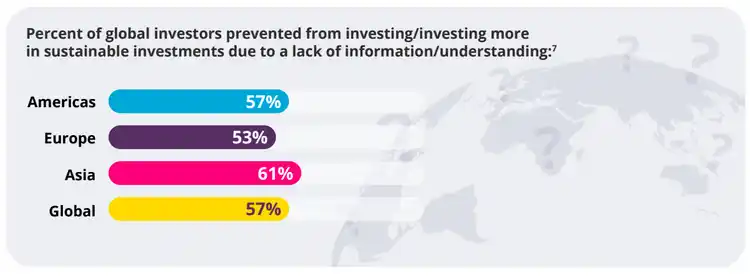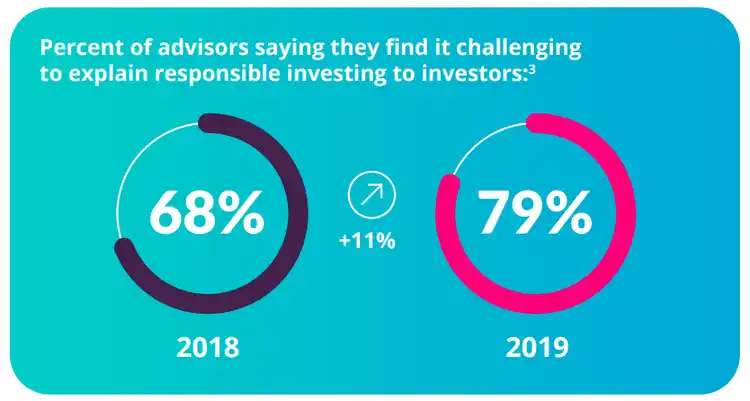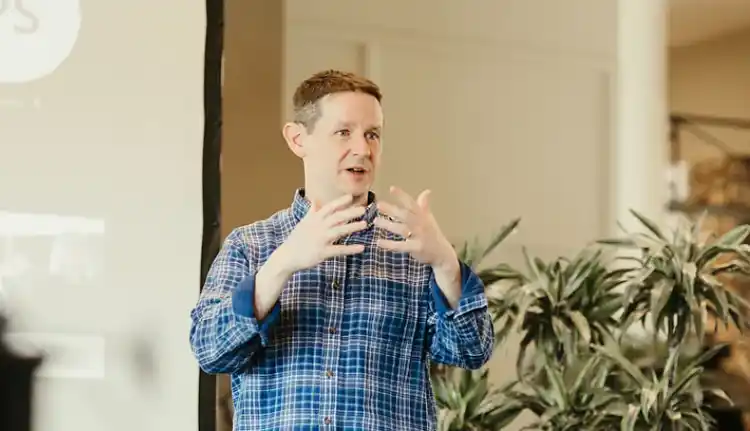How client-centric is your ESG web experience, really?
Read time 5 minutes
In this post:
- How client-centric is your ESG web experience, really?
- Crafting an ESG web experience that helps clients know themselves
- Five questions to pressure test your current ESG web experience
How client-centric is your ESG web experience, really?
If your answer is, “Are you kidding me? See all the educational material we’ve got on our website! And just look at the product range we’re offering!” …then, you’re not wearing your client hat. And your prospective clients are probably punishing you for it.
One of the unintended consequences of the ESG boom is that many investors are being left behind—confused and even overwhelmed by the blizzard of sustainable investing (SI) terms, concepts and products.


You might be thinking “Well, that’s why we have advisors, who can explain and handhold clients on their SI journey.” Problem is, advisors themselves are also feeling confused and ill-equipped to help clients make sense of sustainable investing. And that number is moving in the wrong direction!

Crafting an ESG web experience that helps clients know themselves
The client and advisor confusion magnifies the importance of your web experience for prospects and clients who are early in their sustainable investing journeys – educating themselves, figuring out what’s important to them, understanding what’s even possible when it comes to having their money do well and do good…ultimately, helping them discover their own best-fit sustainable investing path.
As part of the foundational research we did for our recent ESG insight paper, we mystery shopped the web experience of large wealth management firms. We didn’t come away feeling like we had received a client-centric experience—one that really simplifies and clarifies the research and decision-making process for clients. On balance, it felt like the web experience was a little bit of education, quickly leading to ESG product lineups and a button to open an account.
So, to help, here’s a little self-test to gauge how client-centric your web experience is for clients who are discovering ESG investing.
Put yourself in your website visitor’s shoes. Imagine a prospective client…a trusted friend has just told them they’ve shifted a big chunk of their retirement savings into ESG funds. Wanting to learn more about sustainable investing, your prospective client Googles “[your firm name] sustainable investing”, and clicks the first organic listing that comes up for your firm.
Five questions to pressure test your current ESG web experience
Now, for each of the five areas below, pick the statement that best describes your firm’s current web experience from that landing page.
- On the first web page visitors hit
A)…they don’t really do anything other than clicking or reading or watching.
OR
B)…there are a variety of interactive tools and features that engage the client’s active thinking brain. - As visitors progress through our ESG web experience…
A)…the opportunities to engage and share a little about themselves are mostly in filling out fields to download our white papers and thought leadership or to contact an advisor, open an account, etc.
OR
B)…clients can progressively give a little info about themselves (e.g., their SI interests or preferences) and get something personalized in return that helps them better understand themselves in a SI context. - The ESG-related tools a visitor encounters on their web experience with us…
A)…help clients learn about and/or select ESG products [or we really don’t have any ESG-related tools on our website]
OR
B)…help clients discover their own needs, wants and preferences when it comes to finding the best-fit SI path for them - When it comes to visitors who are especially keen on specific aspects of ESG and want to go deeper…
A)…they may have to do a little hunting and trial-and-error to get to the content that is best-fit for them.
OR
B)…our experience has clear pathways by which visitors can easily find avenues to go deeper on ESG topics that are most relevant to them - When it comes to connecting visitors to the next stage of their ESG journey…
A)…if we’re honest, we don’t have a clear jumping off point that is all that compelling to visitors. Our next steps are about learning more about our product lineup or opening an account or something similarly transactional.
OR
B)…visitors leave our web experience with a compelling takeaway that inspires, equips and connects to where it’s most helpful for them to go next in the journey.- It’s the equivalent of designing your own BMW (an electric model, of course) that is highly personalized and reflects who you are…that you can save, share and take into your local dealership.
How’d you do?
If you rocked the B statement all the way through, congratulations! You’ve got a mighty fine client experience there—it’s personalized and engaging and truly helps clients to discover their unique sustainable investing path. If you found yourself selecting the A statement more often than the B statement, there’s work to do to make your ESG web experience more client-centric. Let the B statements be your guide to improve. And, you might find our latest ESG insight paper helpful in thinking about how to amp up the client quotient in your experience.
